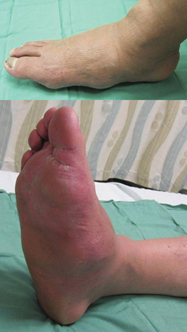Medicaid expansion raises questions, challenges
This issue includes stories on Medicaid expansion in the states, diabetic foot care and addressing Clostridium difficile in the community.
Several of the many question marks raised by the Affordable Care Act (ACA) have involved changes to Medicaid. For example, the ACA included a provision expanding Medicaid eligibility to childless adults with incomes up to 133% of the federal poverty level, a move that the federal government will fund until 2015, when individual states would take over. However, although Medicaid expansion was intended to be mandatory, the Supreme Court's 2012 ruling on the ACA in effect rendered expansion voluntary, leaving states to decide whether they want to opt in or out. In addition, although the ACA called for states to begin using federal funds to reimburse Medicaid at Medicare rates as of Jan. 1 of this year, in many cases this hasn't yet happened. Add to that some uncertainty about what services are covered for new versus existing Medicaid patients, and the situation becomes even more complicated. In our story, Stacey Butterfield talks to physicians in the trenches and other experts to get a real sense of the dilemmas, and some potential solutions.
Our main clinical story this month involves managing foot care in diabetes, which goes beyond just asking patients to remove their shoes and socks at each visit. Many if not most potentially limb-threatening problems can be managed or prevented with early detection, so internists need to be alert not just to obvious problems but to “hot spots” and calluses that could quickly develop into something more. Comprehensive exams and patient education can go a long way toward meeting this goal, experts say. Read our story for more on diagnosis, risk factors and complications, including osteomyelitis and Charcot foot.
Clostridium difficile is often considered an infection associated with the hospital, but most cases of C. diff are actually community-acquired and therefore fall under the care of primary care physicians, according to experts. Accurate diagnosis of C. diff involves awareness of risk factors, such as recent antibiotic use, and proper detection, including the limitations of currently available tests. Turn to our story for more, as well as advice on treatment, common causes and infection control methods.
In other ACA news, health insurance marketplaces became available on Oct. 1, and it's likely that physicians have already been fielding questions from patients about what to sign up for and how. Our Washington Perspective provides an overview of trusted available resources to help navigate this new normal. And finally, for more clinical news, read our conference coverage on choosing the right anticoagulant in patients with stroke.
How are the recent ACA changes affecting you and your patients? Let us know.
Sincerely,
Jennifer Kearney-Strouse



